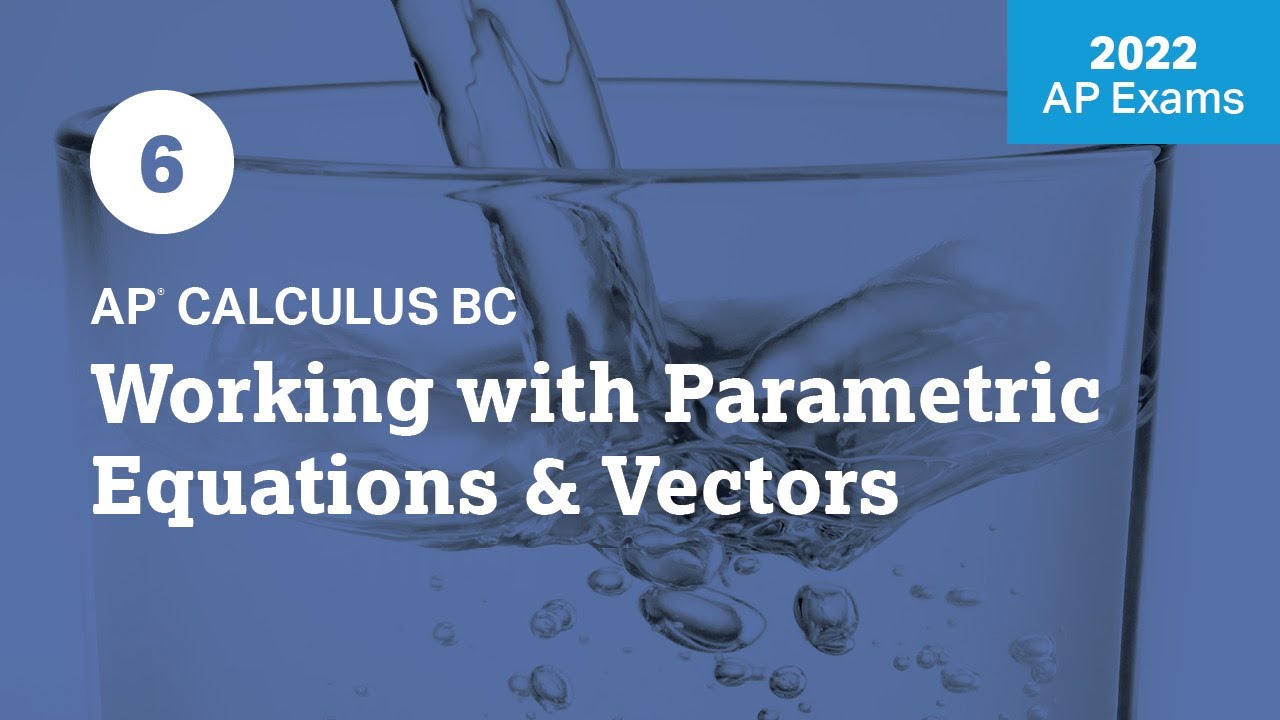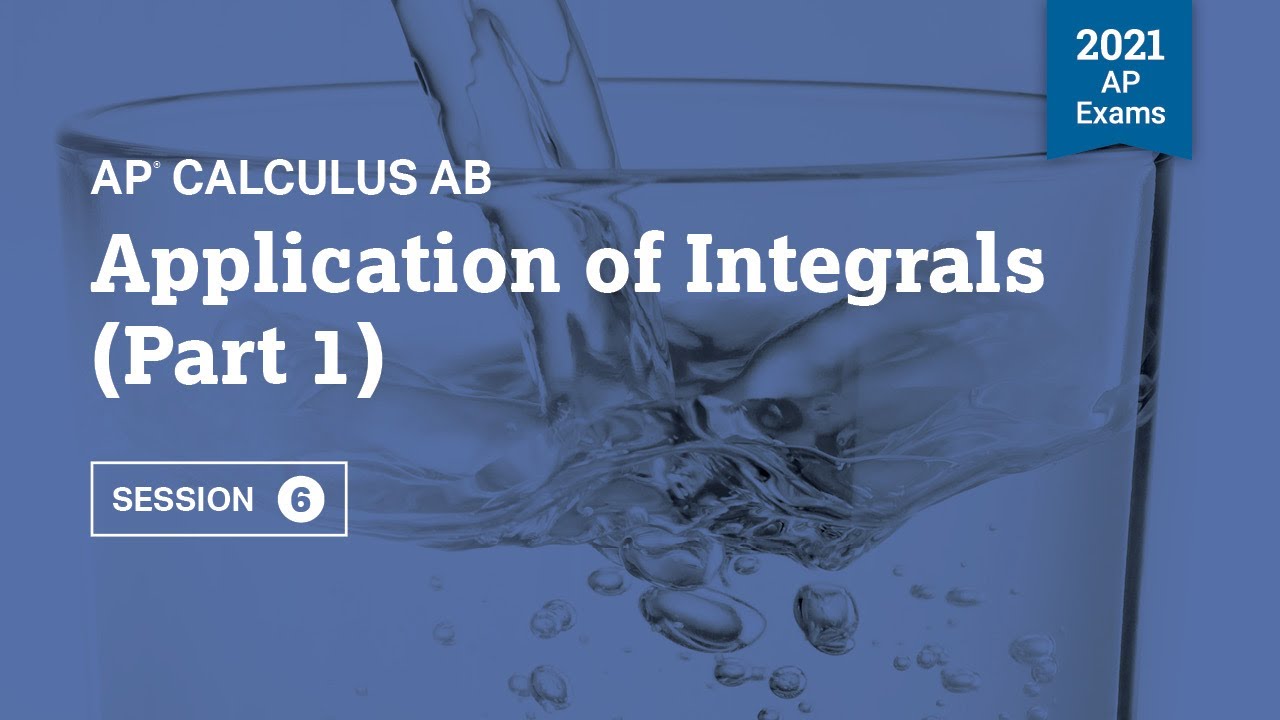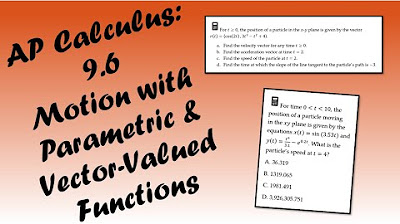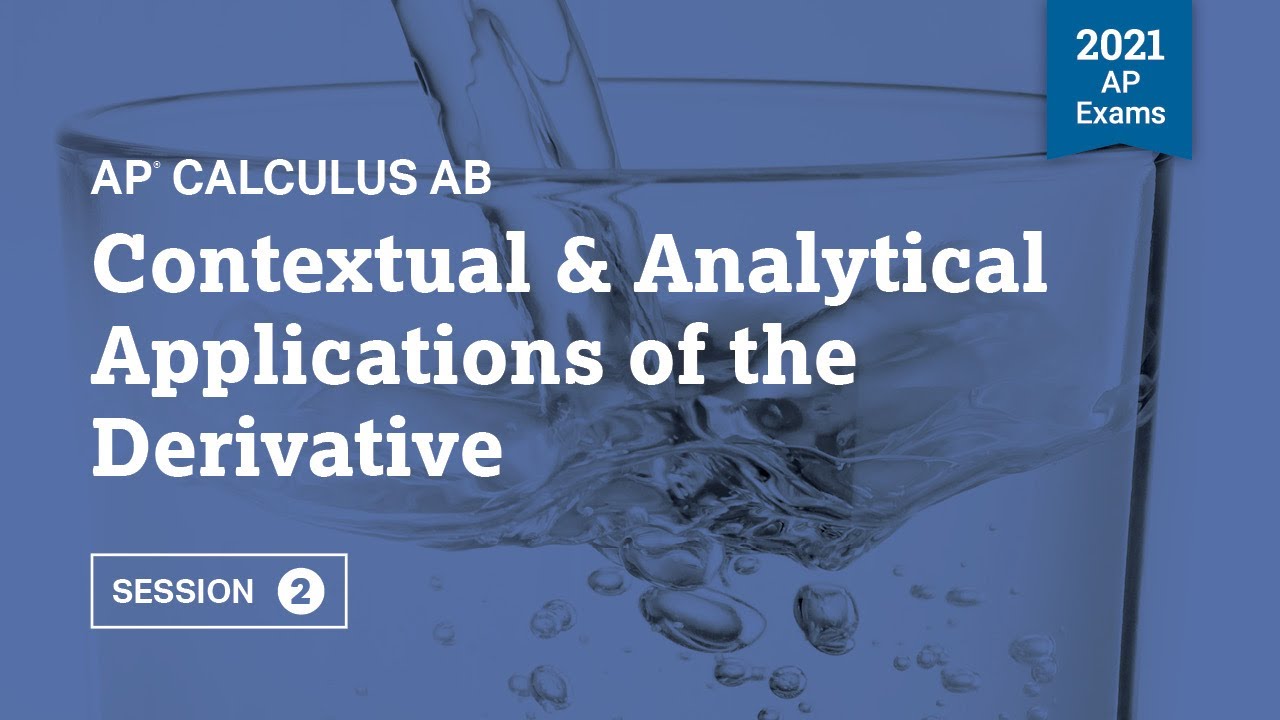2021 Live Review 3 | AP Calculus BC | Everything You Need to Know About Parametrics
TLDRIn this engaging video, the hosts delve into the world of AP Calculus BC, focusing on parametric motion and particle motion. They explore the concepts of position, velocity, and acceleration vectors, and how to calculate them using derivatives. The video is packed with practical examples, including how to find when a particle is at rest and the calculation of the slope of the tangent line at a specific time. The hosts also emphasize the importance of understanding both the x and y components of motion and the potential for seeing parametric or polar FRQs on the AP exam. The video concludes with a reminder of the upcoming session on integration techniques, promising to equip viewers with the knowledge needed to excel in their AP Calculus BC exam.
Takeaways
- 🎓 The video discusses preparing for the AP Calculus BC exam, focusing on parametric motion as a topic that can boost scores significantly.
- 📚 Parametric equations and vectors are closely related, and understanding their connection is crucial for solving problems involving motion in a plane.
- 🌟 The concepts of position, velocity, acceleration, and speed are key in parametric motion, and students should be familiar with their formulas and interpretations.
- 🔍 To find when a particle is at rest, one must simultaneously solve for when both x'(t) and y'(t) equal zero, ensuring no motion in both horizontal and vertical directions.
- 📈 The slope of the tangent line to the path of a particle at a given time can be found by the ratio of dy/dt to dx/dt, which requires understanding the derivatives of the parametric equations.
- 🏃 The speed of a particle is given by the square root of the sum of the squares of its x and y velocities, and this can be calculated using the provided formulas and values.
- 🧭 The direction of motion is determined by the signs of the x and y velocities; positive x-velocity indicates rightward motion, and positive y-velocity indicates upward motion.
- 📊 For multiple-choice questions involving parametrics, careful reading and understanding of the problem statement is essential to avoid common pitfalls.
- 🧮 The average velocity of a particle over an interval can be found using integral calculus, by summing up the velocities over that interval and dividing by the total time跨度.
- 🎉 Memorizing formulas related to parametric motion is important for solving problems quickly and accurately on the AP exam.
Q & A
What is the main topic discussed in the video?
-The main topic discussed in the video is parametric motion in the context of the AP Calculus BC exam, specifically focusing on particle motion and how to solve related problems.
What are the key concepts related to parametric motion?
-Key concepts related to parametric motion include position vector, velocity, acceleration, speed, and the direction of motion. These concepts are applied to problems involving particle motion in a plane.
How is the velocity of a particle in parametric motion calculated?
-The velocity of a particle in parametric motion is calculated by taking the derivative of the position functions with respect to the parameter (usually time). This involves finding both the x-component and y-component of the velocity vector.
What is the significance of the speed formula in parametric motion?
-The speed formula is significant in parametric motion as it provides a way to find the magnitude of the velocity vector. It is calculated as the square root of the sum of the squares of the x and y components of the velocity vector.
How is the direction of motion determined in parametric motion?
-The direction of motion in parametric motion is determined by the velocity components. A positive x-component indicates motion to the right, while a negative y-component indicates motion downward.
What is the role of the left Riemann sum in solving parametric motion problems?
-The left Riemann sum is used to approximate the definite integral, which in turn can be used to find the total distance traveled by the particle over a given time interval.
How does the video address the potential for mistakes in solving parametric motion problems?
-The video emphasizes the importance of carefully reading and understanding the problem, as well as the need to apply formulas correctly. It also highlights the risk of overlooking parts of a question due to the structured nature of the AP exam problems.
What is the significance of the example problem discussed in the video?
-The example problem serves to illustrate the step-by-step process of solving parametric motion problems, including finding the particle at rest, the slope of the tangent line, the speed of the particle, and the average velocity.
What advice does the video give for preparing for the AP Calculus BC exam?
-The video advises students to be familiar with both calculator and non-calculator problems, to memorize key formulas, and to practice solving problems by hand. It also encourages students to review the material and practice problems regularly.
What is the role of multiple choice questions in the AP Calculus BC exam?
-Multiple choice questions play a significant role in the AP Calculus BC exam, as they make up 45 of the total 55 questions on the exam. These questions test students' understanding of a wide range of topics, including parametric motion.
Outlines
📚 Introduction to AP Calculus BC - Parametric Motion
The video begins with a discussion on the challenging topics covered in the previous days, such as Taylor series and polar curves, leading up to the current focus on parametric motion, a popular and enjoyable topic among students for its potential to boost scores on the AP Calculus BC exam. The speakers, Tony and Brian, introduce the concept of particle motion in a plane, emphasizing the importance of understanding position, velocity, and acceleration in both the x and y directions, as well as the application of derivatives in parametric equations.
🤔 Solving Parametric Motion Problems
The paragraph delves into the specifics of solving parametric motion problems, highlighting the need to analyze both horizontal and vertical motions simultaneously. The speakers use an analogy of an Etch A Sketch to explain the concept of x and y motions occurring together. They discuss the importance of finding the correct time 't' when the particle is at rest by setting both x'(t) and y'(t) to zero and using the provided table and graph to approximate the particle's position and slope of the tangent line at a given time 't'.
📈 Riemann Sums and Tangent Lines
This section focuses on using left Riemann sums to approximate the x-coordinate of a particle at a specific time and finding the slope of the tangent line to the particle's path at a given time. The speakers explain the process of integrating the x'(t) equation using the left Riemann sum method and how to calculate the slope of the tangent line by relating the derivative of y with respect to t to the derivative of x with respect to t.
🏃♂️ Speed and Direction of Motion
The speakers discuss how to calculate the speed of a particle at a particular time by using the formula involving the square root of the sum of the squares of the x and y velocities. They also explain how to describe the direction of motion by considering the signs of the x and y velocities. The importance of correctly applying formulas and understanding the nuances of parametric motion, such as the difference between horizontal and vertical components, is emphasized.
📊 Average Velocity and Multiple Choice Practice
The paragraph covers the concept of average velocity and how to find it using integration. The speakers provide a step-by-step guide on calculating the average velocity in the vertical direction by summing up the y velocities and dividing by the time interval. They also transition into multiple choice questions to practice, emphasizing the importance of these questions in the AP Calculus BC exam and providing a sample problem to illustrate the process of solving such problems.
🎓 Understanding Vectors in Parametric Equations
In this section, the speakers clarify the role of vectors in parametric equations, explaining that while the concept of vectors is not heavily tested on the AP Calculus BC exam, understanding vector notation is essential. They discuss how parametric equations can be represented as vectors and how to find the acceleration vector given the velocity vector, using derivatives to move from velocity to acceleration.
🕒 Identifying Times of Rest for a Particle
The speakers conclude the video by discussing how to determine all the times when a particle is at rest, which occurs when both the x and y components of velocity are zero simultaneously. They provide a detailed example of solving for these times using factoring and emphasize the importance of considering both components of motion to accurately answer the question.
Mindmap
Keywords
💡Parametric Motion
💡Velocity
💡Acceleration
💡Tangent Line
💡AP Calculus BC Exam
💡Particle Motion
💡Integration Techniques
💡Free Response Questions (FRQs)
💡Calculator and Non-Calculator Problems
💡Vector
Highlights
The session focuses on preparing for the AP Calculus BC exam, particularly on parametric motion.
Parametric motion is considered a big point grab in the AP Calculus BC exam and is generally enjoyed by students.
The concept of position vector is introduced, emphasizing its importance in parametric motion.
Velocity is defined as the derivative of the position vector, highlighting the relationship between parametrics and vectors.
Acceleration is derived as the second derivative, with a focus on its significance in parametric motion.
Speed is differentiated from velocity, with an emphasis on its calculation as the square root of the sum of the squares of the derivatives.
The slope of the tangent line to the path of a particle is discussed, tying into the derivative concepts.
A five-part question is analyzed, involving finding the time when a particle is at rest, the slope of the tangent line, and approximating the position of the particle.
The use of the left Riemann sum to approximate the position of a particle is explained.
The speed of a particle and the description of its direction of motion are calculated using specific formulas.
Average velocity is defined and calculated using integration, with a focus on its application in parametric motion.
The session transitions to multiple-choice questions for practice, emphasizing the importance of these questions in the AP Calculus BC exam.
A method for identifying when a particle is at rest using velocity components is discussed.
The session concludes with a reminder of the importance of memorizing formulas for success in the AP Calculus BC exam.
The next session will cover integration techniques applicable to the AP Calculus BC exam.
Transcripts
Browse More Related Video

2022 Live Review 6 | AP Calculus BC | Working with Parametric Equations and Vectors

2021 Live Review 6 | AP Calculus AB | Application of Integrals (Part 1)

Polar, Parametric, Vector Multiple Choice Practice for Calc BC (Part 4)

AP Calculus BC Lesson 9.6

Polar, Parametric, Vector Multiple Choice Practice for Calc BC (Part 2)

2021 Live Review 2 | AP Calculus AB | Contextual & Analytical Applications of the Derivative
5.0 / 5 (0 votes)
Thanks for rating: